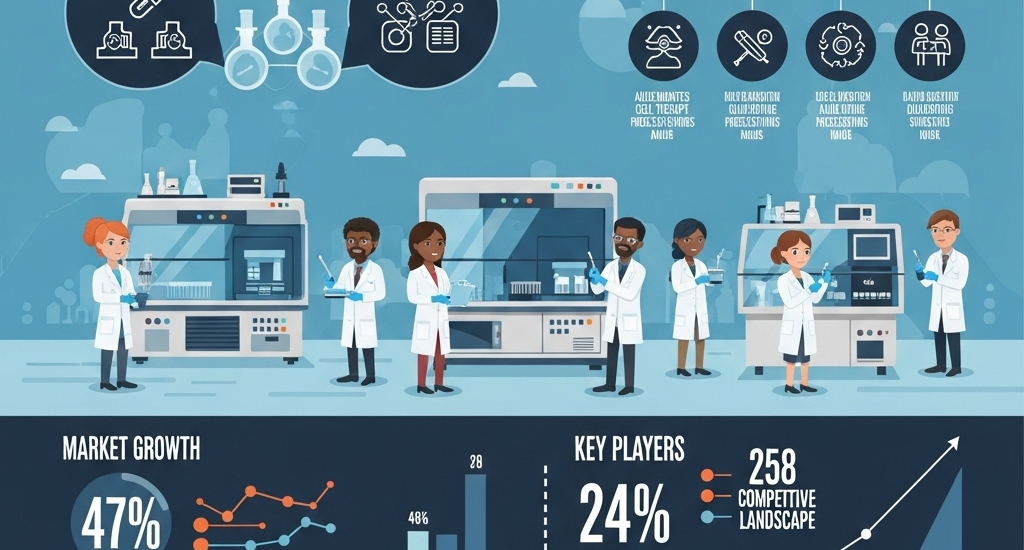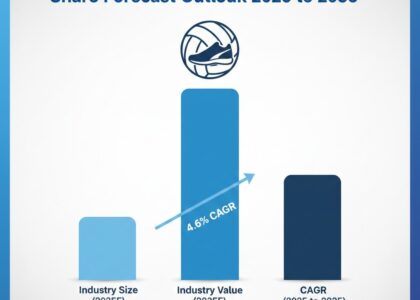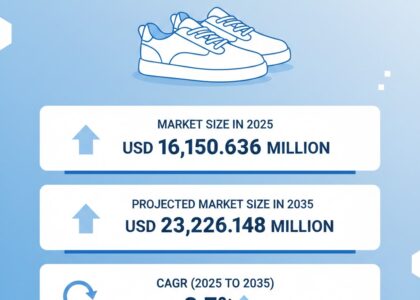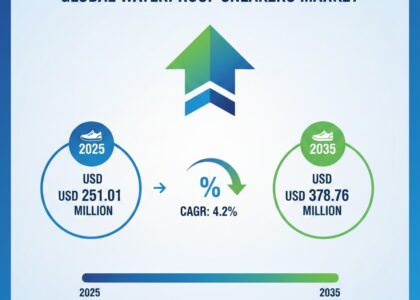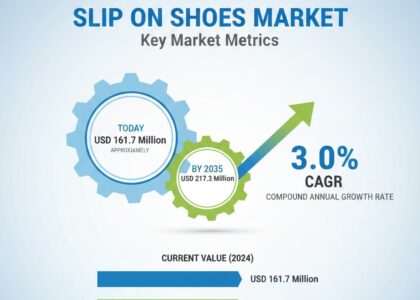The global Automated Cell Therapy Processing Systems Market is projected to be valued at USD 1.79 billion in 2025 and is expected to reach USD 8.5 billion by 2035, registering a CAGR of 16.2% during the forecast period. This expansion is driven by the escalating demand for personalized medicine, particularly in treating chronic diseases such as cancer and autoimmune disorders.
The automated cell therapy processing systems market is rapidly evolving, driven by significant advancements in biotechnology and medical engineering. These systems streamline the manufacturing and processing of cell-based therapies, enabling greater precision, scalability, and reproducibility. Automated systems reduce manual labor, minimize contamination risks, and enhance product consistency—key factors in accelerating the adoption of cell therapies globally.
Cell therapy has emerged as a promising solution for treating various diseases, including cancer, autoimmune disorders, and genetic conditions. The integration of automation into cell therapy processing is transforming traditional workflows, offering higher efficiency and compliance with regulatory standards. This market is gaining traction among pharmaceutical companies, research institutions, and healthcare providers aiming to improve patient outcomes and reduce production costs.
Get Sample Report: – https://www.futuremarketinsights.com/reports/sample/rep-gb-16106
Market Trends
Several trends are shaping the automated cell therapy processing systems market, reflecting the dynamic nature of the industry:
- Increased adoption of closed system technologies: Closed systems minimize contamination risks and align with strict regulatory requirements, making them the preferred choice.
- Integration with digital platforms: Advanced software and AI-driven analytics are increasingly embedded to monitor process parameters and improve decision-making.
- Shift towards personalized medicine: Automation enables scalable production of individualized therapies, such as CAR-T and TCR therapies.
- Rising investments in R&D: Both public and private sectors are heavily investing in developing more efficient and cost-effective automated solutions.
- Expansion of contract manufacturing organizations (CMOs): CMOs are adopting automated systems to meet growing demand, facilitating outsourcing of cell therapy production.
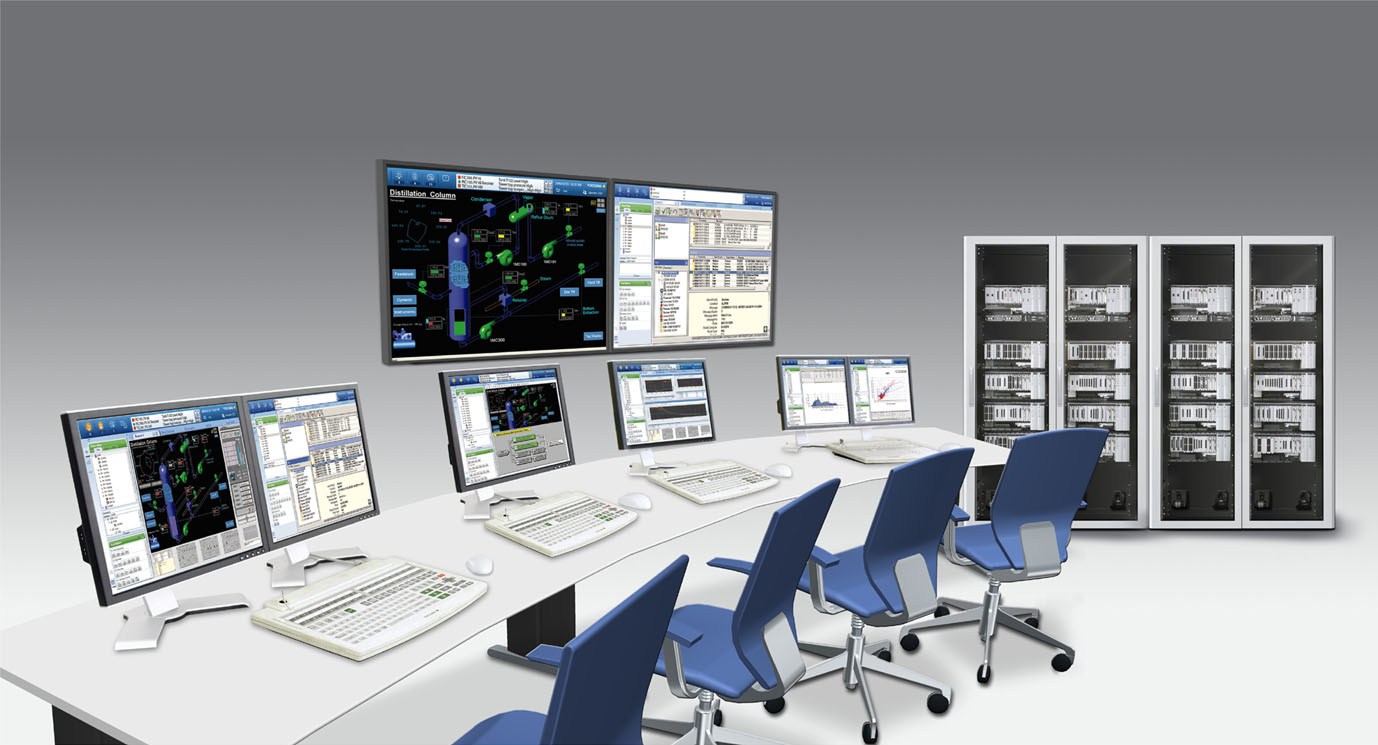
Driving Forces Behind Market Growth
Several critical factors are driving the growth of the automated cell therapy processing systems market:
- Rising prevalence of chronic diseases: Increasing cases of cancer and autoimmune diseases are fueling demand for innovative cell therapies.
- Regulatory support: Governments worldwide are facilitating faster approvals for cell therapies, encouraging manufacturers to adopt automation.
- Technological advancements: Improvements in robotics, microfluidics, and sensor technologies are enhancing the capabilities of automated processing systems.
- Cost efficiency: Automation reduces manual labor costs and minimizes errors, making cell therapy manufacturing more economically viable.
- Growing awareness: Increasing knowledge about the benefits of cell therapy among clinicians and patients is driving demand.
Challenges and Opportunities
While the market offers substantial growth potential, it also faces specific challenges and opportunities:
Challenges:
- High initial investment: The cost of implementing automated systems can be prohibitive, especially for smaller companies.
- Complex regulatory landscape: Navigating the stringent regulations for cell therapy manufacturing requires significant expertise.
- Technical complexity: Integrating various processing steps into a seamless automated workflow is technically demanding.
- Standardization issues: Lack of standardized protocols can hinder widespread adoption.
Opportunities:
- Emerging markets: Expanding healthcare infrastructure in developing regions presents untapped potential.
- Technological innovation: Continuous innovation in automation and analytics can overcome existing technical barriers.
- Collaborations and partnerships: Alliances between technology providers, pharmaceutical companies, and research institutions can accelerate market growth.
- Personalized therapies: Automation supports the scaling of personalized treatments, a high-growth segment.
Regional Analysis
The automated cell therapy processing systems market shows significant regional variation influenced by economic, regulatory, and technological factors:
- North America: Dominates the market due to advanced healthcare infrastructure, high R&D investment, and favorable regulatory environment.
- Europe: Holds a strong position, driven by significant government funding and a growing biotech industry.
- Asia-Pacific: Rapid growth fueled by expanding healthcare facilities, increasing awareness, and rising adoption in countries like China, Japan, and India.
- Latin America and Middle East & Africa: Emerging markets with potential due to increasing healthcare investments and collaborations.
Top Companies
Key players in the automated cell therapy processing systems market are focusing on innovation and strategic partnerships to maintain their leadership:
- Company A: Known for its cutting-edge closed system technologies and scalable solutions.
- Company B: Specializes in integrating AI-driven analytics into cell processing.
- Company C: Offers modular systems tailored for personalized medicine applications.
- Company D: Focuses on developing cost-effective automated platforms for emerging markets.
- Company E: Provides comprehensive automation solutions, including hardware and software integration.
These companies are investing heavily in R&D and expanding their global footprint to capture growing market opportunities.
Explore In-Depth Analysis-Click Here to Access the Report:- https://www.futuremarketinsights.com/reports/automated-and-closed-cell-therapy-processing-systems-market
Segmentation Outlook
The automated cell therapy processing systems market can be segmented based on various criteria:
- By Product Type:
- Automated cell processing instruments
- Consumables and reagents
- Software and services
- By Therapy Type:
- Cancer therapies (e.g., CAR-T)
- Regenerative medicine
- Others (e.g., autoimmune diseases)
- By End User:
- Hospitals and clinics
- Research and academic institutes
- Pharmaceutical and biotechnology companies
- Contract manufacturing organizations (CMOs)
- By Technology:
- Closed system automation
- Semi-automated systems
- Fully automated systems


